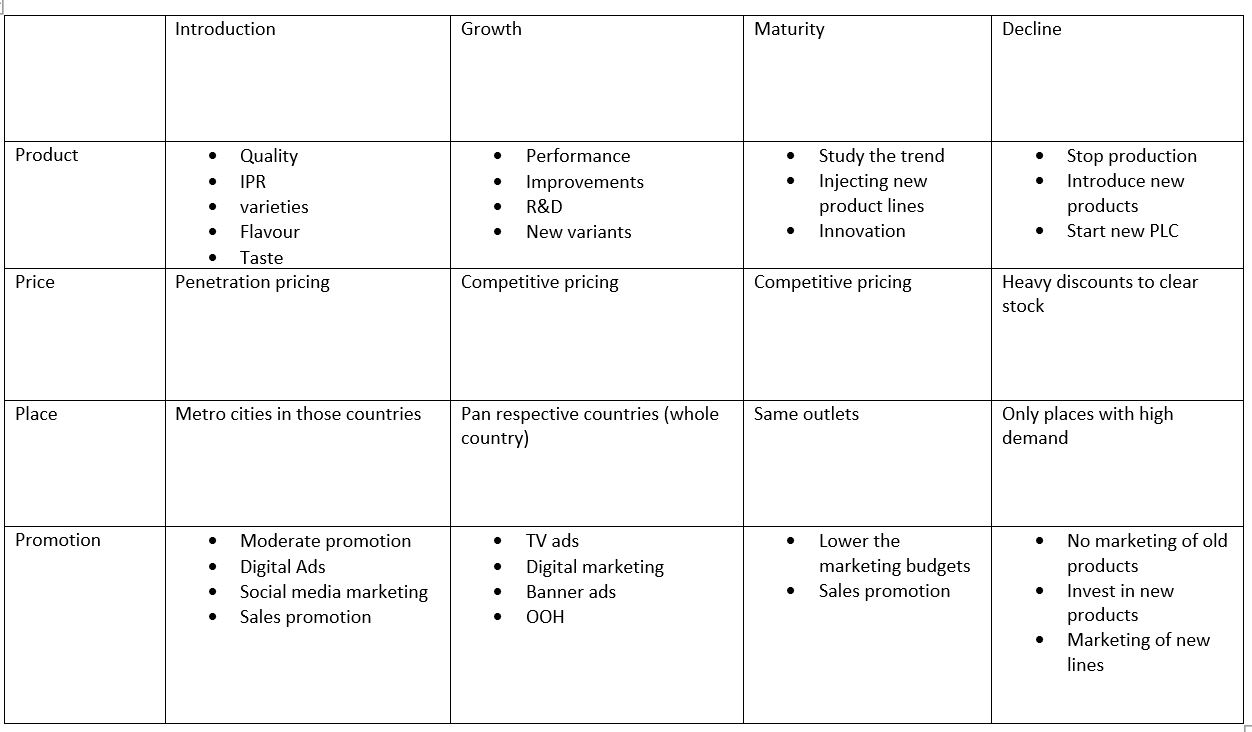
Announcement
FINAL | BUSINESS CASE - BCS 06
Marketing Manager Submission BCS 06
NMO 2020
Marketing Strategy for Ramalingam Foods in fast expanding markets
Submission Date & Time : 2020-04-26 02:57:01
Submitted By: N Praveen Ram - Marketing Manager From Team Sky
Assignment Taken
Marketing StrategyCase Understanding
The case talks about an Indian food product company that is planning to expand its business into other parts of the world. Ramalingam Foods found its success in selling packaged foods (Idly-Dosa batter) during emergency and later went on to making and selling of similar products as its core business during the later years. The product portfolio of the company grew beyond the batter to include instant, easy to make sweets and snacks mixes as well. With the son of the company’s founder coming to the helm of affairs, the company is now looking to expand to overseas markets where it feels there will be a good reception for its food products.BCS Solution Summary
The solution is about developing a marketing strategy for the company in fast expanding markets. The solution talks in detail about the various important aspects of marketing strategy such as the value proposition, the segmentation and the positioning of the company, the promotion of the products etc.Solution
MARKETING STATEGY:
The marketing strategy should ensure that the product is getting sufficient shelf space and the traction among customers in the retail outlets of its target markets. This is possible through strategic relationships with the supply chain partners, the retailers and the customers themselves by positioning the products and promoting them in the right way.
Mission:
Ramalingam Foods aims to enter new international markets where it has a potential to become the market leader by serving the Indian people living in that country through its ready to cook food products from the Indian cuisine.
Marketing Objectives:
- To enter the right markets for expanding the business internationally.
- Achieve a market share of 10% within one year of entering a new market.
- Strengthen the presence at home market by introducing new products and marketing them to the right audience.
- To increase shelf space and brand recognition in the international markets.
SWOT Analysis of the company:
Strengths:
- Good products.
- Brand recognition within India
- Been in the market for a long time.
- Good understanding of the Indian market.
Weaknesses:
- Lack of international exposure.
- Lack of strategic partners (supply chain members, logistics etc.) outside India.
Opportunities:
- New markets to expand business.
- Diversifying risk by moving serving more than one market.
- Opportunity to become the market leader in a developing market.
- More revenues and profits.
- Increased brand recognition.
Threats:
- May lead to significant loses if the right markets are not entered.
- Lack of bargaining power with supply chain partners.
Segmentation:
- Demographic segmentation: Race and culture- The people of Indian origin are segment of interest as the product offerings are from the Indian cuisine.
Age group: People whose age fall in the range of 25-40 years. These Millennials tend to travel more for their education, for work or for recreational purposes.
- Behavioral Segmentation: User status- The group of people to be targeted based on their usage levels are: 1. Non-users
2.Potential users
3.First-time users
Target Markets:
The target markets chosen to enter are those that have a substantial population of Indians. This population can be either the Indian diaspora or people who have recently shifted there for work or for educational purposes. The markets chosen are of South-East Asia where a sizable population lives in each of the countries chosen. The countries to be entered are: 1. Singapore (5.1lakh Indians)
2. Myanmar (29 lakh Indians)
3. Indonesia (2.3 lakh Indians)
4. Thailand (2.5 lakh Indians)
5. Malaysia (20 Lakh Indians)
Target Group:
The customer to be targeted are “Millennials of Indian origin, who live in or travel to others countries for professional or personal reasons. These people may or may not have used the product the company has to offer.”
Positioning:
The company is to be positioned as “The maker of healthy, ready to cook food which takes about five minutes to prepare. Nine out of every 10 dieticians recommend the products made Ramalingam Foods”.
Brand Value Proposition:
The company’s products enable customers to enjoy healthy, easy to make Indian food that reminds them of home, in addition to the affordable prices of the products.
The Marketing Mix for the first year: The 4Ps:
Product:
- Ready to cook Indian food products.
- Easy to cook.
- Takes less time to prepare - 5 minutes.
- Very healthy.
- No artificial ingredients added.
- 100% organic.
- Available in various quantities.
- Tasty.
- Three layered packaging.
- Intellectual property rights (IPR) to prevent plagiarism.
Place:
- Available at mom and pop stores, super markets and hyper markets in metro cities of the target countries.
- Local Indian restaurants.
- Local Indian community halls.
Price:
- Affordable prices in the range of Rs.50 - Rs.300 INR and equivalent in the target market’s currency.
- Penetration pricing is used for achieving a good market share.
Promotion:
- Through television commercials.
- Web page ads.
- Social media.
- Word of mouth marketing.
- Sponsoring events in localities where most of the target population is expected to reside.
- Through events of the Indian community clubs of that country.
Factors critical to success:
Getting good customer satisfaction initially is key to a sustained competitive advantage on the long run. Since, the new product sales is heavily dependent on satisfying the initial set of customers who buy the product, getting the taste and the hygiene related aspects correct is essential. This is because these customers can really cause some serious damage to the company’s prospects in the new markets though poor reviews of the product.
The second important factor to success is partnering with the right players in the supply chain business in order to ensure that the product is easily accessible to the end customers. The company must ensure it has an influencing hand in the bargaining process so that a win-win situation is possible for both the company and the supply chain partners. The retailers have to incentivized for giving the adequate shelf-space to the company’s products in their outlets.
Unique Selling Propositions that would help in increasing sales:
- Taste: The food products offered to the customers are very tasty.
- Healthy: The food products are very healthy. They contain no artificial ingredient. All that goes into the preparation of the food products are organic.
Promotion Expenses:
The amount allotted to the marketing department is ₹4.5 crores per annum.
The country wise allotment of the funds available for promotional activities are:
- Singapore: ₹1.5 crore
- Malaysia: ₹1 crore
- Myanmar: ₹1 crore
- Thailand: ₹50 lakhs
- Indonesia: ₹50 lakhs
So, the average amount to be spent per month in promotional activities is around 7.5 lakh per country.
Singapore, Malaysia and Myanmar are allotted the highest amount from the funds available because Singapore is both a place for studying and working for many Indians. Indians stay in Malaysia and Myanmar predominantly for their office work.
Conclusion
• The marketing strategy for Ramalingam foods that would support the company’s plan for expansion into other fast expanding markets was devised. • Having the right supply chain partner and promoting the product in the right areas to the right people is essential. • Since, the product is a new entrant in that market, having good customer satisfaction is very important. This is because a positive word of mouth among the target audience would have a long-term impact in the company’s prospects in that new market.Attached File Details



Great marketing strategy , praveen . And you choses perfect target market for those countries
Participant
N Praveen Ram
Great Lakes Institute of Management
1st year b-school student
Team Sky BCS 06 Submission
Total Team Points: 63004.5
Team Air BCS 06 Submission
Total Team Points: 66715.5















